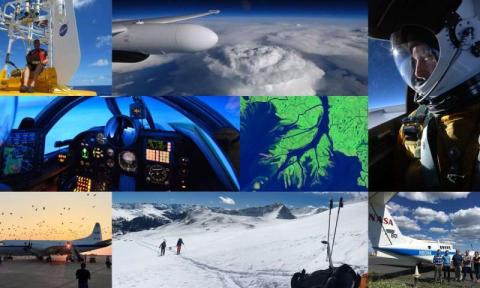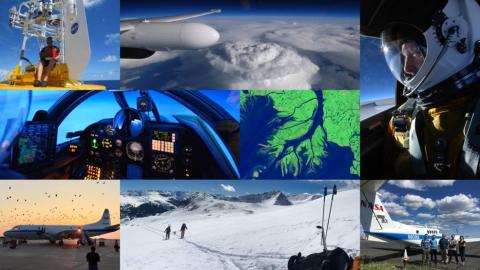Only a few people are able to fly one of the most difficult planes in the world, and not everyone can look at and interpret scientific data. For the NASA mission based in Salina this month, these two kinds of people, and many other experts, are needed to ensure its success.
News
DCOTSS Salina Journal

You may see an unusual plane flying in and out of Salina over the next few weeks after Salina Regional Airport was chosen by NASA as the base for a research project.
The Dynamics and Chemistry of the Summer Stratosphere (DCOTSS) project began flights from Salina Regional Airport about two weeks ago and sees an aircraft travel upwards of 70,000 feet to look at strong thunderstorms in the stratosphere.
The project uses a NASA ER-2, a variant of the Lockheed U-2, equipped with 12 different scientific instruments to collect data in flight.
Kenneth Jucks, the project manager for NASA's Upper Atmosphere Research Program, said the majority of the agency's scientific work is done with space-based data, but aircraft are used to enhance the science NASA conducts.
ABC News DCOTSS Coverage

NASA recently began new research to investigate how extreme summer weather may be affecting the upper layers of earth's atmosphere.
Kenneth Bowman, Ph.D., the principal investigator for the Dynamics and Chemistry of the Summer Stratosphere (DCOTSS) research project, spoke to reporters about the project during a press briefing on Tuesday. He said their goal is to understand how intense summer thunderstorms over the U.S. affect the stratosphere -- the second layer of earth’s atmosphere as you move toward space -- especially as climate change causes severe thunderstorms to occur more often.
NASA Mission Explores Intense Summertime Thunderstorms

NASA and university scientists will be studying the intense summer thunderstorms over the central United States to understand their effects on Earth’s atmosphere and how it contributes to climate change.
DCOTSS Teams Begin Integration

Teams supporting the Earth Venture Suborbital-3 project, Dynamics and Chemistry of the Summer Stratosphere (DCOTSS), began integration of instruments onto the ER-2 at AFRC this week in preparation for the July deployment to Salina, Kansas. Earth Science Project Office personnel and three instrument teams (PALMS (Particle Analysis by Laser Mass Spectrometry), POPS (Printed Optical Particle Spectrometer), and MMS (Meteorological Measurement System)) arrived in Palmdale and began work May 3rd. Integration will be completed in June and the first test flight is scheduled for June 9. Caitlin Murphy (ESPO) and Paul Bui (MMS) are pictured here.
NASA embarks on five US expeditions targeting air, land and sea

NASA is sending five airborne campaigns across the United States in 2020 to investigate fundamental processes that ultimately impact human lives and the environment, from snowstorms along the East Coast to ocean eddies off the coast of San Francisco.
NASA Embarks on Five U.S. Expeditions Targeting Air, Land and Sea

NASA is sending five airborne campaigns across the United States in 2020 to investigate fundamental processes that ultimately impact human lives and the environment, from snowstorms along the East Coast to ocean eddies off the coast of San Francisco.
Modified spy plane to see whether towering storms pose new threat to ozone layer

NASA's ER-2 is again preparing to soar to the overworld in search of a potential new threat to the ozone layer.


